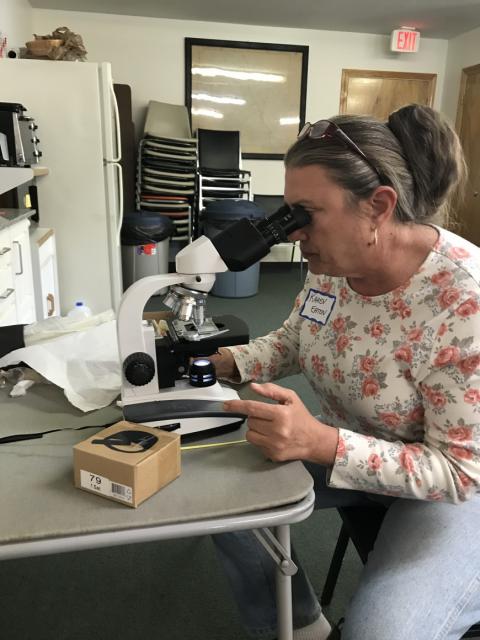New Honeybee Diagnostic Network Turns One

The NH Honeybee Diagnostic Network is nearing its first birthday.
Since our initial training and distribution of diagnostic tools and equipment in early 2018, we have sampled and analyzed 64 individual honeybee hives across the state. We are primarily looking at the fungal pathogen Nosema and the relative infection level per hive. It is difficult to make inferences about statewide trends related to Nosema because infection level is tightly related to individual hive management and the conditions of that hive.
Environmental conditions can play a big role in Nosema infection. One reason that Nosema exists in New Hampshire and not in southern states is because those states do not experience a long cold winter. We know that Nosema levels spike during periods of confinement (just like kids at daycare spreading their germs) and mitigating high levels of Nosema going into fall is critical to ensuring bees survive the winter. We recommend having your bees tested by one of our diagnostic volunteers in both late summer and again in spring. If your bees die this winter for a reason unknown to you, we recommend submitting a sample to the network.
Nosema infection level from our N.H. samples range from very high, 70 million spores per bee (interestingly that hive had swarmed), to below detectable level in nearly 20 samples. When bees are infected with a high level of Nosema ceranea, they can become lethargic, exhibit cessation of feeding behavior and might continue to rear brood into winter. Presence or absence of dysentery should not be used as an indicator of Nosema. There is no evidence that Nosema and dysentery are at all related. N.ceranae can also suppress the immune response of the bee. Infection can result in odd behavior as well as a weakening of the hive, making them more susceptible to infection of other pests and diseases.
When we experience such catastrophic hive loss throughout the state, as high as 65 percent in 2016-17, we need better tools to help us manage against such losses. Testing for Nosema is one such tool that we can employ to better inform the individual beekeeper as to the health of their hive. Results from the NHBA hive loss survey has shown us that many beekeepers do not know why their hive died. This is a problem the NH Diagnostic Network hopes to address through empowering beekeepers to become more informed on the relative disease load in their bees. We encourage all beekeepers regardless of location to participate in the diagnostic network. Samples can be mailed in or submitted through your local bee club. We have a team of volunteers throughout the state ready to look at your bees under the microscope, free of charge. The diagnostic network’s website includes information on how to collect and submit samples.
The NH Honey Bee Diagnostic Network is a collaboration between UNH Cooperative Extension and the New Hampshire Beekeepers Association and is made possible by a 2017 Sustainable Agriculture Research and Education (SARE) Professional Development Program grant.
